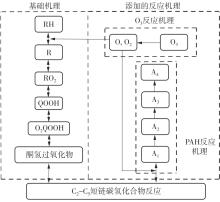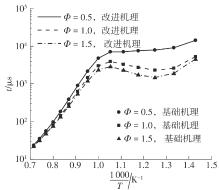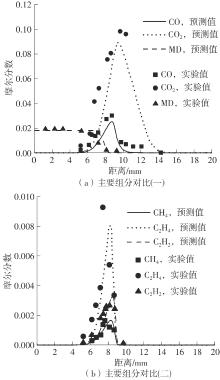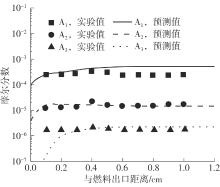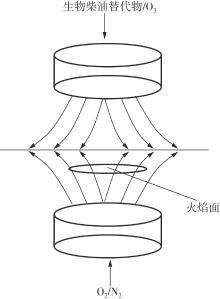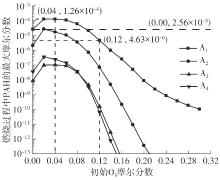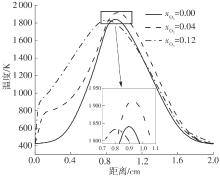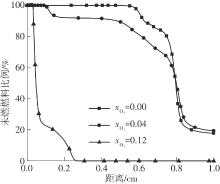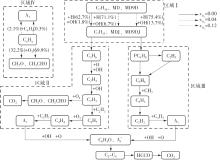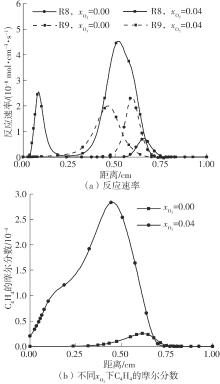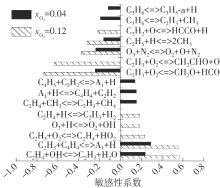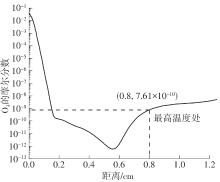| [1] |
梅德清,俞玥,高亚平,等 .多组分燃料液滴高温蒸发耦合机制研究[J].华南理工大学学报(自然科学版),2023,51(3):33-40,82.
|
|
MEI Deqing, YU Yue, GAO Yaping,et al .Coupling mechanism of high-temperature evaporation of multi-component fuel droplets[J].Journal of South China University of Technology (Natural Science Edition),2023,51(3):33-40,82.
|
| [2] |
ISSARIYAKUL T, DALAI A K .Biodiesel from vegetable oils[J].Renewable and Sustainable Energy Reviews,2014,31:446-471.
|
| [3] |
WESTBROOK C K, NAIK C V, HERBINET O,et al .Detailed chemical kinetic reaction mechanisms for soy and rapeseed biodiesel fuels[J].Combustion and Flame,2011,158(4):742-755.
|
| [4] |
FISHER E M, PITZ W J, CURRAN H J,et al .Detailed chemical kinetic mechanisms for combustion of oxygenated fuels[J].Proceedings of the Combustion Institute,2000,28(2):1579-1586.
|
| [5] |
HERBINET O, PITZ W J, WESTBROOK C K .Detailed chemical kinetic mechanism for the oxidation of biodiesel fuels blend surrogate[J].Combustion and Flame,2010,157(5):893-908.
|
| [6] |
LUO Z, PLOMER M, LU T,et al .A reduced mechanism for biodiesel surrogates for compression ignition engine applications[J].Fuel,2012,99:143-153.
|
| [7] |
NI Z, LI F, WANG H .Simplification of the combustion mechanism of Jatropha biodiesel surrogate fuel and reaction path analysis[J].Energy,2023,282:128859/1-9.
|
| [8] |
王晶,张漫 .不同前驱体模型对航空煤油扩散火焰碳烟颗粒生成的影响研究[J].工程热物理学报,2021,42(12):3286-3295.
|
|
WANG Jing, ZHANG Man .Study on the influence of different soot inception models on the soot particles formation in a aviation kerosene diffusion flame[J].Journal of Engineering Thermophysics,2021,42(12):3286-3295.
|
| [9] |
SLAVINSKAYA N A, FRANK P .A modelling study of aromatic soot precursors formation in laminar methane and ethene flames[J].Combustion and Flame,2009,156(9):1705-1722.
|
| [10] |
WANG H, DENEYS R R, YAO M F,et al .Development of an n-heptane-n-butanol-PAH mechanism and its application for combustion and soot prediction[J].Combustion and Flame,2013,160(3):504-519.
|
| [11] |
DONG X, CHANG Y, NIU B,et al .Development of a practical reaction model of polycyclic aromatic hydrocarbon (PAH) formation and oxidation for diesel surrogate fuel[J].Fuel,2020,267:117159/1-14.
|
| [12] |
WU Y X, LIU F X, SUN Y L,et al .Effects of carbon dioxide and water vapor addition on benzene and PAH formation in a laminar premixed CH4/O2/Ar flame[J].Combustion Science and Technology,2019,191(10):1866-1897.
|
| [13] |
LIU F, DWORKIN S B, THOMSON M J,et al .Modeling DME addition effects to fuel on PAH and soot in laminar coflow ethylene/air diffusion flames using two PAH mechanisms[J].Combustion Science and Technology,2012,184(7/8/9):966-979.
|
| [14] |
ZENG W .Single zone simulation of polycyclic aromatic hydrocarbon formation in n-heptane HCCI combustion[J].Advanced Materials Research,2011,236/237/238:525-529.
|
| [15] |
LI S, GAO J, HUANG C,et al .Development of a reduced n-heptane/toluene/unsaturated furans-PAH reaction mechanism for dual-fuel engine applications[J].Fuel,2022,317:123466/1-15.
|
| [16] |
WANG H, LI Y, IQBAL Z,et al .A comparison study on the combustion and sooting characteristics of base engine oil and n-dodecane in laminar diffusion flames[J].Applied Thermal Engineering,2019,158:113812/1-6.
|
| [17] |
LIU X L, WANG H, WEI L X,et al .Development of a reduced toluene reference fuel (TRF)-2,5-dimethylfuran-polycyclic aromatic hydrocarbon (PAH) mechanism for engine applications[J].Combustion and Flame,2016,165:453-465.
|
| [18] |
YAMADA H, YOSHII M, TEZAKI A .Chemical mechanistic analysis of additive effects in homogeneous charge compression ignition of dimethyl ether[J].Proceedings of the Combustion Institute,2005,30(2):2773-2780.
|
| [19] |
FOUCHER F, HIGELIN P, MOUNAÏM-ROUSSELLE C,et al .Influence of ozone on the combustion of n-heptane in a HCCI engine[J].Proceedings of the Combustion Institute,2013,34(2):3005-3012.
|
| [20] |
MASURIER J, FOUCHER F, DAYMA G,et al .Investigation of iso-octane combustion in a homogeneous charge compression ignition engine seeded by ozone,nitric oxide and nitrogen dioxide[J].Proceedings of the Combustion Institute,2015,35(3):3125-3132.
|
| [21] |
SEIGNOUR N, MASURIER J, JOHANSSON B,et al .Ozone-assisted combustion of hydrogen:a comparison with isooctane[J].International Journal of Hydrogen Energy,2019,44(26):13953-13963.
|
| [22] |
LIU S, LIN Z L, ZHANG H,et al .Impact of ammonia addition on knock resistance and combustion performance in a gasoline engine with high compression ratio[J].Energy,2023,262:125458/1-12.
|
| [23] |
ZHOU Y, GAN Y H, ZHANG C Y,et al .Numerical study for influence of ozone on the combustion of biodiesel surrogates in a homogeneous charge compression ignition engine[J].Fuel Processing Technology,2022,225:107039/1-12.
|
| [24] |
SLAVINSKAYA N A, RIEDEL U, DWORKIN S B,et al .Detailed numerical modeling of PAH formation and growth in non-premixed ethylene and ethane flames[J].Combustion and Flame,2012,159(3):979-995.
|
| [25] |
HALTER F, HIGELIN P, DAGAUT P .Experimental and detailed kinetic modeling study of the effect of ozone on the combustion of methane[J].Energy & Fuels,2011,25:2909-2916.
|
| [26] |
SARATHY S M, THOMSON M J, PITZ W J,et al .An experimental and kinetic modeling study of methyl decanoate combustion[J].Proceedings of the Combustion Institute,2011,33(1):399-405.
|
| [27] |
HE Y T, LUO Y, ZHANG Q,et al .Effects of air-side dimethyl ether premixing on combustion characteristics of nonpremixed biodiesel/air counterflow flames[J].Fuel,2022,316:123306/1-11.
|
| [28] |
INAL F, SENKAN S M .Effects of equivalence ratio on species and soot concentrations in premixed n-heptane flames[J].Combustion and Flame,2002,131(1/2):16-28.
|
| [29] |
SOLMAZ E, BISETTI F .Flamelet chemistry model for efficient axisymmetric counterflow flame simulations with realistic nozzle geometries and gravitational body force[J].Combustion Theory and Modelling,2020,24(5):926-952.
|
